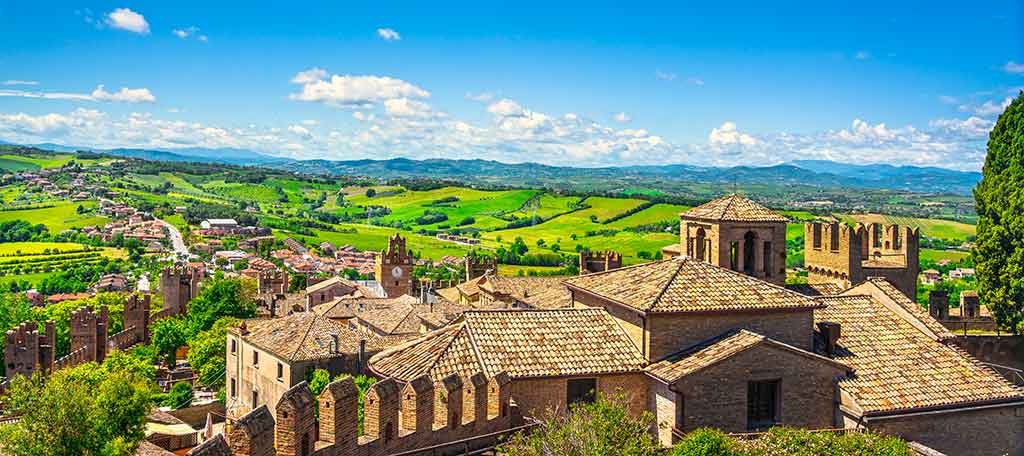Welcome to Marche in
Italy, one of the most popular vacation destination in the world. If you’are
planning to visit Italy for your next trip and you are looking for the best
places to visit, here you’ll find tips and suggestions of most popular point of
interest and activities not to be missed. Find out what to see in the main art cities such as Pesaro Urbino, the city of
Gioacchino Rossini, Ancona and its white beaches, Macerata university city of
the Marche hills, what to do in a day trip to the sea or in the mountains, what
are the Marche villages more unusual to visit. Whether you travel by motorbike or camper, or
you decide to visit Marche in summer or winter, on a rainy or sunny day,
whether you have two or three days available, Visititaly always offers you the
right tips for planning a trip. Travelers will
appreciate this italian region with his rich historical and artistic heritage,
local culture and environment. Discover the monuments, buildings, natural treasures
and all the details that characterize Marche and its territory. Share and suggest a place you've visited.

View of the Urbino countryside
Nothing beats a break from the monotony of daily life than a holiday in an unspoiled countryside, away from stress and in harmony with nature.
Marche, with its towering snow-capped peaks of the Sibillini mountains that form an awe-inspiring backdrop for the lush countrysides, is an ideal Italian getaway for a traditional and relaxing holiday. Immersed in architecture and art from the Renaissance period, the entire region of Marche is like an outdoor museum with sights to see at every corner.
Its beautiful beaches, silent villages and historical towns are perfect for a family vacation or just for some silent time away to oneself. Delve into this region's historical past with a visit to the Renaissance palaces that dot the towns of Urbino and Macerata. Explore its many fortresses that have stood through time.
The region's beautiful squares, medieval houses and historic centres are a never-failing delight. Take in some of the most picturesque views from one of the region's seaside resorts, spend time at the seafront or take a stroll down the endless sandy beaches of the Adriatic coastline. Apart from water sports, bicycling is common in the region for those who are looking for more vigorous activities.
The Ancona and Rimini airports service the Marche region, and a short taxi drive will take you to some of the warmest holiday homes that give you a glimpse of the best of Italian hospitality. Don't forget to explore some of the regions traditional eateries that serve century-old recipes, as well as Verdicchio and other traditional wines.
written by Emilio Aronica - Last update: 03/09/2022